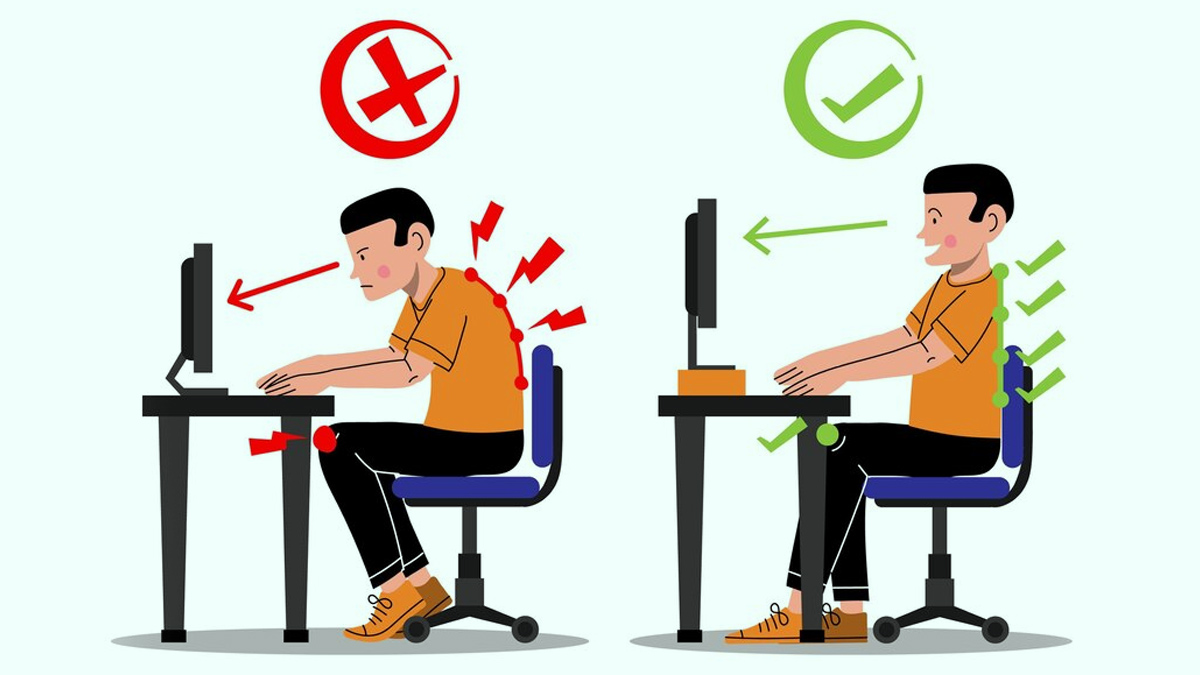
For us who do a desk job, working nine-to-five, back pain is a common issue. This constant feeling of discomfort can affect people of all ages and can be caused due to various factors from poor posture to underlying medical conditions. There is an urgent need to address this issue as a recent Lancet study revealed that in 2020, low back pain affected 619 million people globally, with a projection of 843 million cases by 2050.
To get some tips on preventing back pain and associated spine diseases, OnlyMyHealth team spoke to Dr BSV Raju, Senior Consultant, Neuro and Spine Surgeon, Yashoda Hospitals, Hyderabad, who expressed the inevitability of back pain, “Your body's anatomy evolves during your lifetime. Your tissues deteriorate as you become older, which causes degenerative changes in your spine, leading to back pain and spine diseases.”
Tips To Prevent Back Pain And Spine Diseases

Elucidating the reasons that can lead to back pain, Dr Raju shared, “Back pain can manifest itself in several ways, from a nagging dull aching to an acute, abrupt pain. It can also happen as a result of a fracture, sprain, or other unintentional harm. It can be caused by an illness or medical issue, such as spinal stenosis (a constricted spinal canal through which the spinal cord runs), fibromyalgia, or arthritis. The fact that many people are overweight or inactive contributes to the development of back discomfort as well.”
To help create awareness about the best practices to prevent back pain and maintain a healthy spine, Dr Raju shared a few tips.
Increase Your Exercise
You might believe that resting and limiting exercise are the best ways to treat back pain. That is not the case. Resting for a day or two could be beneficial, but longer could make the pain worse. Regular exercise can actually reduce muscle stress and inflammation. Additionally, several varieties of yoga and tai chi may assist you in developing good posture and enhancing your strength, balance, and flexibility.
Also Read: Are You Taking Care of Your Spine? 7 Essential Tips to Follow on World Spine Day 2023
Rest Well
Consult your doctor about the ideal sleeping posture if you frequently experience back pain. Sometimes it's advised to sleep on your side with your knees slightly bent towards your chest.
If you would rather sleep on your back, place a pillow beneath your lower back and knees. Your back may especially suffer if you sleep on your stomach. Put a pillow beneath your hips if you are unable to sleep in any other position.
Be Mindful Of Your Posture
Standing with your heels up against a wall will help you check your posture. Your head, shoulders, and back should all touch the wall when you stand. You should be able to reach behind the small of your back with one hand. Move forward and assume a regular position now. If your posture changes, immediately adjust it.
Observe Your Weight

Being overweight, especially around the waist, can exacerbate back discomfort by changing your centre of gravity and straining your lower back. Back pain might be managed if you stay within 10 pounds of your optimal weight.
Choose The Right Chair
A chair with a straight-back or low-back support is the best choice for avoiding back strain. While sitting, keep your knees slightly higher than your hips. The small of your back should be pleasantly supported by the chair back, which should be angled at about 110 degrees.
Use a wedge-shaped cushion or lumbar pad if necessary. Use a stool, if necessary, to support your feet. Keep your head up and your stomach in if you must stand for an extended amount of time. Place one foot, if possible, on a stool or box that is six inches high. Alternate feet every 5-15 minutes.
Also Read: Bone Health: Here's How Hybrid Working Modules Affected the Spine Health Of People?
Comfortable Placing Of Laptop Or Monitor
Centre your computer monitor in front of you, about an arm's length away, to avoid straining your neck and eyes. The monitor's top should be two to three inches or less above your eye level. It could be more comfortable to slant your monitor slightly if you wear bifocals.
Type At A Comfortable Height
Many people place their keyboard at roughly chest level immediately on their desk. However, prolonged use at that height when typing reduces blood flow and places stress on the joints and nerves in your arms, shoulders, and wrists. That may result in discomfort and numbness, there as well as in your back. It might potentially result in chronic issues like carpal tunnel syndrome.
Reduce Your Laptop Usage
Your laptop might be portable, but if you use it frequently, put it on a desk and type using a different keyboard and a mouse. You slant your head forward when using a laptop on your lap for an extended amount of time. This causes pressure to build up on the vertebrae at the top of your neck, which can resulting in headaches, back and neck pain.
Our spines bear the maximum brunt to keep our bodies upright, our organs in place, and keep our overall well-being intact. And rightly so, if we take it for granted, it unleashes its wrath upon us. However, preventing back pain and maintaining a healthy spine is fairly simple. All it requires is making lifestyle changes and seeking medical attention when needed. By following these tips, you can reduce the risk of spine-related diseases and enjoy a pain-free, active life. Remember, your spine is the pillar of your body. Take care of it, and it will support you for years to come.







